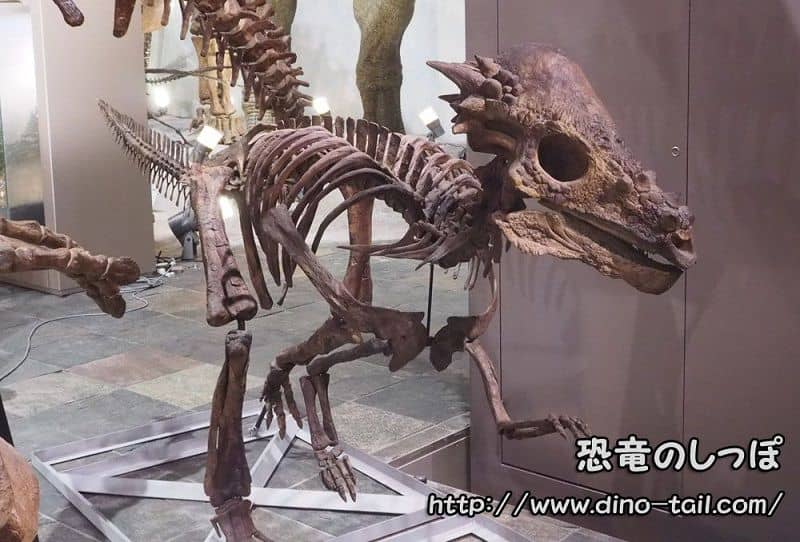About Pachycephalosaurus
| Scientific Name (Genus) | Pachycephalosaurus |
| Meaning of Name |
Thick-headed lizard
pachys (thick) [Greek] - kephalē (head) [Greek] - saurus (lizard) [Greek] |
| Classification | Ornithischia, Marginocephalia (Pachycephalosauria) |
| Total Length | Approx. 6m |
| Diet | Herbivorous (possibly omnivorous) |
| Period | Late Cretaceous (approx. 70-66 million years ago) |
| Species | Pachycephalosaurus wyomingensis |
| Year of Paper Publication | 1943 |
| Genus Name Publication |
A study of the troödont dinosaurs with the description of a new genus and four new species.
Bulletin of the American Museum of Natural History. 82 (5) by Brown, Barnum; Schlaikjer, Erich M. 1943. |
Features: A Body Shrouded in Mystery
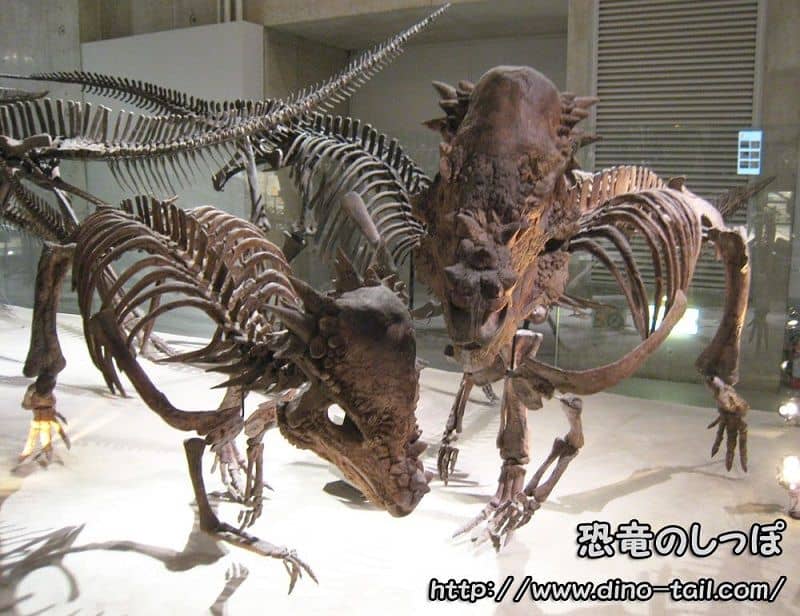
Pachycephalosaurus is the largest known pachycephalosaur, believed to have reached a length of over 6 meters. As its name suggests, the top of its head was covered by a hard, bony dome up to 25 cm thick. It was truly a 'thick-headed lizard.'
However, surprisingly, only the skull of Pachycephalosaurus has ever been discovered. Therefore, reconstructions of its full skeleton are merely speculative, based on smaller, more complete relatives like Stegoceras. Much about its actual body size and appearance remains a mystery.
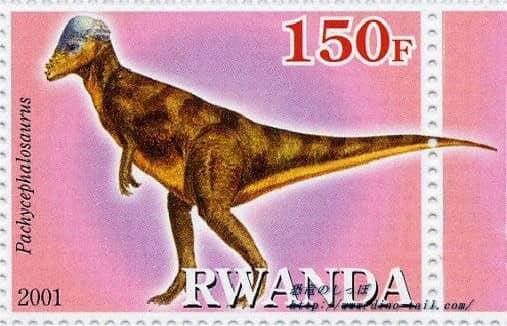
Because its front teeth were sharp like knives, it has been suggested that it may have been an omnivore that ate not only plants but also insects and small animals.
One Dinosaur, Three Faces: The True Identity of "Dracorex" and "Stygimoloch"
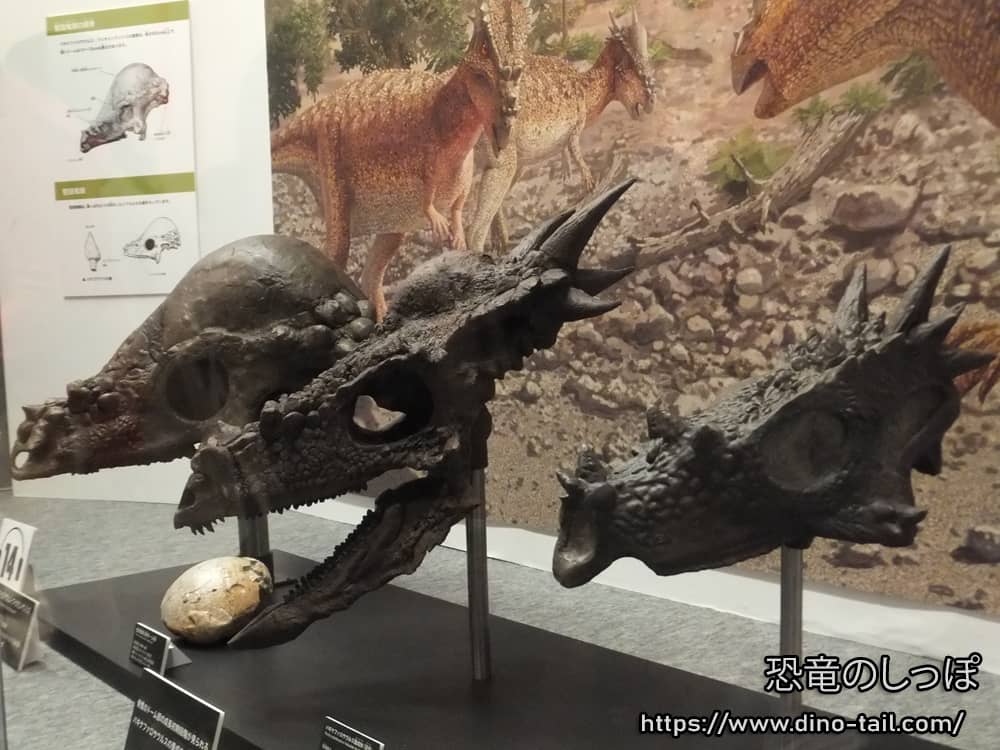
Right (front): Dracorex
Middle: Stygimoloch
Left (back): Pachycephalosaurus
One of the most surprising discoveries in recent dinosaur research concerns the growth of Pachycephalosaurus. It is now widely accepted that Dracorex and Stygimoloch , once thought to be separate dinosaurs, are actually the juvenile and subadult forms of Pachycephalosaurus .
Research by renowned paleontologist Dr. Jack Horner and his colleagues has revealed that Pachycephalosaurus underwent dramatic changes in head shape as it grew.
- Juvenile stage = "Dracorex": The head was flat, with several long, sharp spikes on the back.
- Subadult stage = "Stygimoloch": The dome on the top of the head began to rise, and the spikes on the back remained but became shorter and thicker.
- Adult stage = "Pachycephalosaurus": The dome became huge, thick, and rounded, and the long spikes on the back were absorbed and transformed into small, rounded knobs.
In other words, as they grew, they lost the spikes that were used as weapons or for display and instead developed a thick dome. This is a groundbreaking discovery that shows that the diversity of dinosaurs was less than previously thought, and instead, the morphological changes within a single individual's growth were very large.
The Role of the Thick Skull: Changing Tactics with Growth
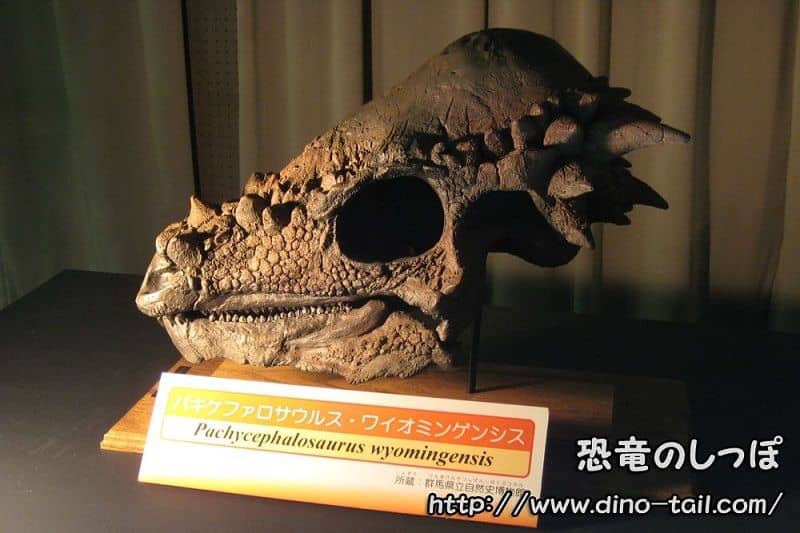
The use of Pachycephalosaurus's thick head has long been debated, with the 'head-butting theory' being a prominent topic. Recent research suggests that its role and use may have differed depending on the growth stage.
Young individuals with long spikes (Dracorex and Stygimoloch) were not suited for head-on butting. Instead, it is thought that they used 'flank-butting' to attack the sides of enemies or rivals with their spikes, or simply used them for display to intimidate opponents.
On the other hand, the thick dome of adults, with its short, rounded spikes, may have been used for ritualistic combat, butting heads with each other to determine rank within the herd. CT scan analysis has found structures that would have cushioned the impact of head-butting and healed injuries, providing evidence that supports the 'head-butting theory.' They may have been skilled fighters who changed their fighting style as they grew.
On the back of the head, there were bony, spike-like projections. These spikes may have been a characteristic of males.
Description Paper and the Passed-Around Specimen ANSP 8568
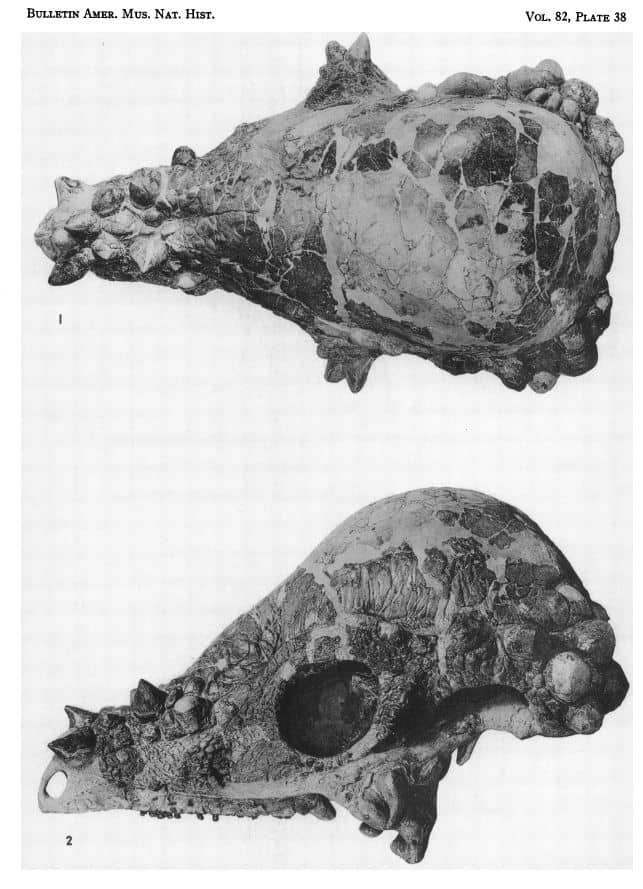
Source: A study of the troödont dinosaurs with the description of a new genus and four new species.
Bulletin of the American Museum of Natural History. 82 (5)
by Barnum Brown; Schlaikjer, Erich M. 1943.
Pachycephalosaurus was described as a genus in 1943. A paper titled 'A study of the troödont dinosaurs with the description of a new genus and four new species' was published in the Bulletin of the American Museum of Natural History in December 1943.
It was described by the American paleontologist Barnum Brown based on a nearly complete skull, specimen number AMNH 1696, discovered in the Hell Creek Formation in Montana, USA.
Specimen number ANSP 8568, discovered in the Lance Formation in southeastern Montana in the 1850s, was given the genus name 'Tylosteus' in 1872, about 70 years before Pachycephalosaurus was described as a genus, as it was thought to be the skin of a reptile with an armadillo-like hide.
It was not until 1979 that this fossil was identified as the bone extending from the back of the head of Pachycephalosaurus.
Furthermore, in 2006, Robert M. Sullivan submitted a paper suggesting that 'specimen number ANSP 8568 is more similar to Dracorex than to Pachycephalosaurus!'
It seems that specimen number ANSP 8568 is being passed around between genera.
Pachycephalosaurus Stamp & Fossil Gallery
